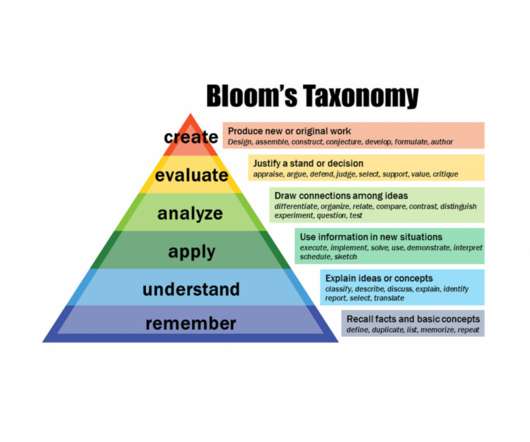Tips on Creating Clear Learning Objectives
KnowledgeOne
JUNE 30, 2020
Defining clear learning objectives is a challenging first step when creating a course. Viewed as the backbone of many educational strategies, Bloom’s taxonomy is a teaching tool that helps you design a course based on the outcomes you want to achieve. What is Bloom’s taxonomy? How NOT to write learning objectives.













































Let's personalize your content